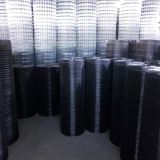Home > Company News > Stainless steel woven mesh patterns
Company News

Plain Weave: This is the most common weave type, where each warp wire crosses over and under successive weft wires, creating a simple over-and-under pattern. It provides good strength, high visibility, and uniform openings, making it suitable for general-purpose applications such as screening and sizing operations .
Twill Weave: In twill weave, each warp wire crosses over every two weft wires, and each weft wire crosses over every two warp wires, creating a diagonal pattern. This weave provides higher strength and better resistance to wear compared to plain weave, making it commonly used in applications that require a strong and durable mesh .
Dutch Weave (also known as Twill Dutch Weave): Dutch weave consists of thicker wires in the warp direction and finer wires in the weft direction. This weave type offers excellent filtration capabilities and is suitable for applications where fine particle retention is essential, such as industrial filters and separation apparatus .
Crimped Wire Mesh: This type of mesh involves compressing the warp wires so they wrap over the weft wires, and vice versa. This crimping action bends the wires, causing them to interlock and wrap around each other, adding rigidity and strength to the mesh .
Pre-Crimped Weave: In this method, the wire is crimped before weaving, adding small folds or ridges to enhance the mesh's rigidity and strength. This process helps keep the weft and warp wires securely in place and prevents them from shifting .
Non-Crimped Wire Mesh (Plain Weave): This features a basic over-under weave of weft and warp wires, resulting in a wire mesh with a smooth and consistent surface. It is often used for screening applications, including window screens and screen doors .


